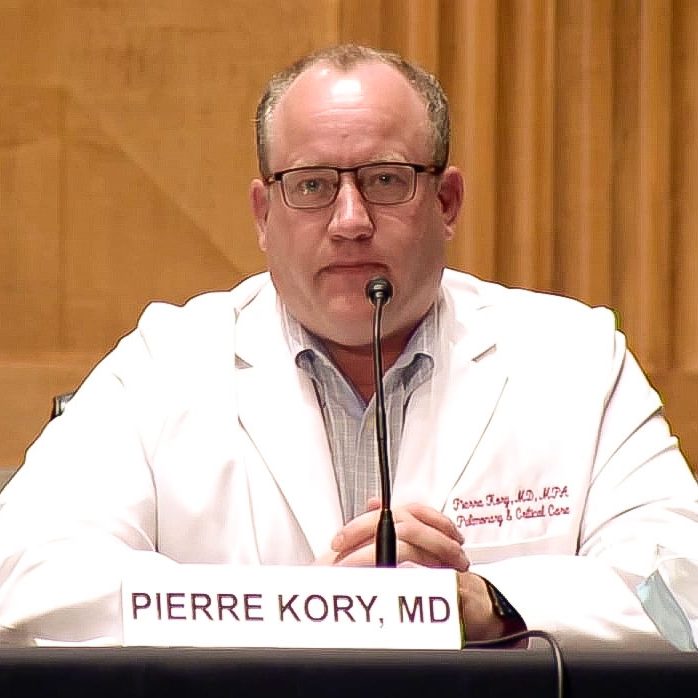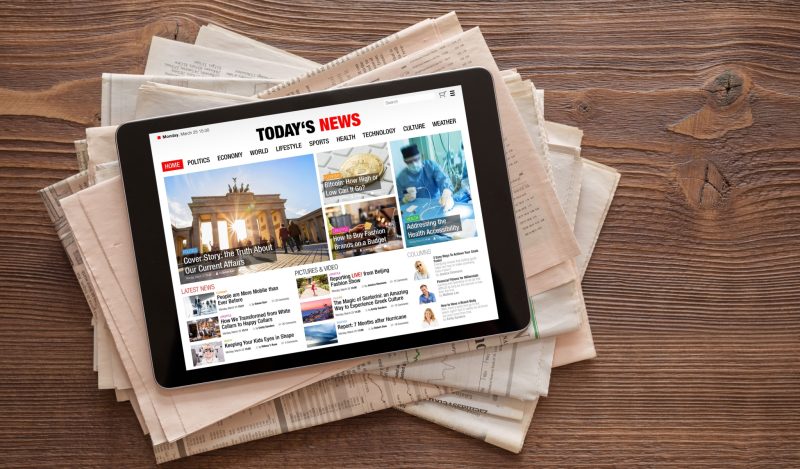Despite the best efforts of the mainstream media to pillory him as an anti-vaccine conspiracy theorist, Robert F. Kennedy, Jr. is having a moment. A recent poll from CNN of all places showed him earning 20 percent of Democratic primary voters – and that was before his Joe Rogan interview and shirtless push-up video went viral. Kennedy’s support only confirms the titanic loss of trust between voters and mainstream media.
Except for those in the business, few people understand the inner workings of the media world. As a doctor and lifelong Democratic voter who pulled the lever for Biden in 2020, I had no clue. Prior to COVID-19, I trusted that what I was reading represented the truth. My experience running the Front Line COVID-19 Critical Care Alliance (FLCCC) quickly disabused me of that idea.
The first wave hit in December 2020, when I testified in the Senate that corticosteroids were saving my COVID patients’ lives. My recommendations weren’t just ignored – they were attacked, and I was personally ridiculed as a fraud and Trump puppet. My life and career were upended. I felt forced to resign my faculty position. It was cold comfort when a few months later, a large study confirmed my testimony and government agencies added steroids to the standard of care for COVID patients.
I struggled to make sense of it through much of 2021. The Biden administration and the mainstream media single-mindedly pushed untested vaccines even as the FLCCC accumulated more and more evidence that cheap, generic medicines could stop COVID. As I detailed in my new book, The War on Ivermectin, simply presenting evidence that doctors were using the medicine to treat and prevent COVID around the world was a dog whistle for the mob.
After this crash course in media manipulation, I was much savvier and learned to spot the tactics. When in September 2021 Rachel Maddow tweeted a local news story to her 10 million followers about Oklahoma hospitals being overrun with ivermectin overdoses, I knew it was fake news.
The report quoted a doctor claiming that patients overdosing on ivermectin were backing up rural hospitals. Supposedly people coming to the ER with serious injuries – even gunshot wounds – could not access care. The story was laundered through countless media outlets and blue checks, who were already skeptical of ivermectin because of its association with Trump and his supporters. In their eyes, a bunch of MAGA lunatics overdosing on “horse dewormer” were killing grandma.
Six days later, the hospital where the doctor worked confirmed that the story was a total fabrication. There were no ivermectin overdoses – none – and the doctor hadn’t worked at the hospital in more than two months.
This was easily the sloppiest and most brazen hit job the media pulled during the pandemic. But Rolling Stone’s coverage took the cakes. The outlet used a photo portraying people lined up outside wearing winter clothes – wrong season. As the saying goes, “A lie is halfway round the world before the truth has got its boots on.” To this day, Rolling Stone still hasn’t taken the story down. It simply changed the headline and slapped on a disclaimer.
The whole debacle presents a neat lesson in how to create a fake news cycle. It goes like this.
Step one: Identify a public tool, such as poison control centers, that are easy to manipulate. These organizations have a public hotline and email address that anyone can use to report a problem. The reports are logged as “adverse events,” but they are not easily confirmed and typically will be tabulated for public records whether or not they have been verified. This is exactly what happened with the Oklahoma story. The local poison control center was deluged with fake calls from people claiming they overdosed on ivermectin.
Step two: Deploy “independent,” seemingly credible voices to validate and embellish the false claims. Doctors are among the most trusted professionals, but having a medical degree doesn’t make you an honest broker. Many doctors struggle to earn a living practicing medicine, and sadly some – like the Oklahoma ER doc – will stoop to industry or political hit jobs if it pays the bills. And doctors willing to go on the record expressing concern about a health scare – ivermectin overdoses – are all a reporter needs for a juicy scoop.
Step three: Coordinate with institutional allies to add legitimacy – FDA, American Medical Association, and GAVI (The Vaccine Alliance) – to add credibility and fan the flames with outraged public statements and targeted ad buys. Reporters can pose questions to their representatives at televised briefings, which carried more significance during the pandemic.
Finally, step four: Activate the echo chamber in mainstream and social media. Twitter influencers who live and play in the Acela corridor can talk to each other in the green rooms of cable news studios and glitzy Beltway gatherings. They can pat each other on the back for exposing the crazies and conspiracy theorists.
The pharmaceutical company didn’t invent this playbook, though it used it effectively to wage war on ivermectin and rake in more than $30 billion from COVID vaccines. Tobacco, energy, chemicals, and other industries have deployed these same tactics to neutralize competition and preserve market control.
Big business has been gaming the system for a long time, but the rise of social media has turned once respected media institutions into clickbait machines easily manipulated by industry. With Americans locked in their homes and constantly primed to accuse each other of killing grandma, the pandemic rapidly accelerated this trend and gave pharma – and its media allies – strong motive and ample opportunity.
From masks and lockdowns to vaccines and remote learning: Time and again, solutions touted by the media oversold and underdelivered. We may never know how many lives were lost because of the tactics used to suppress ivermectin, but we know we can’t trust the media. That explains RFK Jr.’s rise – and it’s why I wouldn’t bet against him.
Reprinted from RealClearPolitics
Published under a Creative Commons Attribution 4.0 International License
For reprints, please set the canonical link back to the original Brownstone Institute Article and Author.









